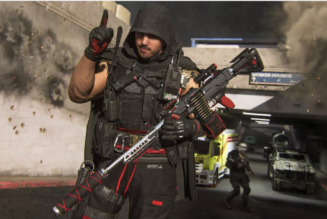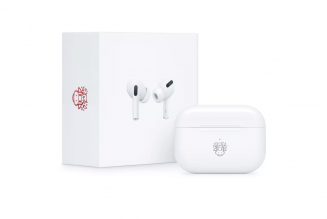It’s not the most fun, but reliability goes a long way.
Look, fun is fun and all, but sometimes boring is better.
A flip phone dripping with nostalgia that comes in bold colors and lets you run apps all willy-nilly on the cover screen? With inviting wallpapers and playful UI touches? That’s fun. It’s also not the Samsung Galaxy Z Flip 6. But while I thoroughly enjoyed using the Motorola Razr Plus — the fun flip phone — reliability wins out in the end.
Samsung’s newest clamshell-style foldable is a light update on last year’s model. It costs $1,099, which is a hundred dollars more than last year but also just what flagship phones cost these days. The inner and outer screens get a little brighter in direct sunlight, there’s a slightly bigger battery, and there’s an upgraded main camera, plus the latest Qualcomm chipset, naturally.
That paragraph could describe any number of new Android phones this year. And in the case of the Z Flip 6, that’s actually a good indication of how far Samsung’s flip phone has come. Last year’s update from a small cover screen to the current 3.4-inch OLED took the Flip series from “eh, it’s kinda cool” to “okay this is something.” It’s a far cry from Samsung’s earliest attempts.
But the Z Flip 6 hasn’t totally reached parity with slab phones; it’s certainly not the most fun flip phone. Sure, it’s the best Samsung flip phone — I just wish it would borrow a few ideas from some of the competition.
If I’d never picked up the Motorola Razr Plus, I’d think the Z Flip 6’s outer screen was pretty darn good. But the Razr’s bigger, higher-res screen wraps all the way around the punchouts for the lenses and flash. It makes the Flip 6’s cover screen, which keeps well away from that whole area, look stodgy and cramped by comparison.
And not to get too caught up about wallpapers, but Samsung’s best idea about new wallpapers for the outer screen is… a donut that bounces around when your phone moves? There’s so much more fun stuff you could do with this! Moto’s wallpapers are colorful and inviting, there’s an adorable turntable that spins when you’re playing audio, and I swear one of the background options is blurple. The Z Flip 6 comes with a proper always-on display this time around, but it lacks the sense of fun that I’d expect from a flip phone. Motorola has a mode that turns the whole phone into a retro flip phone, for Pete’s sake. Let’s live a little.

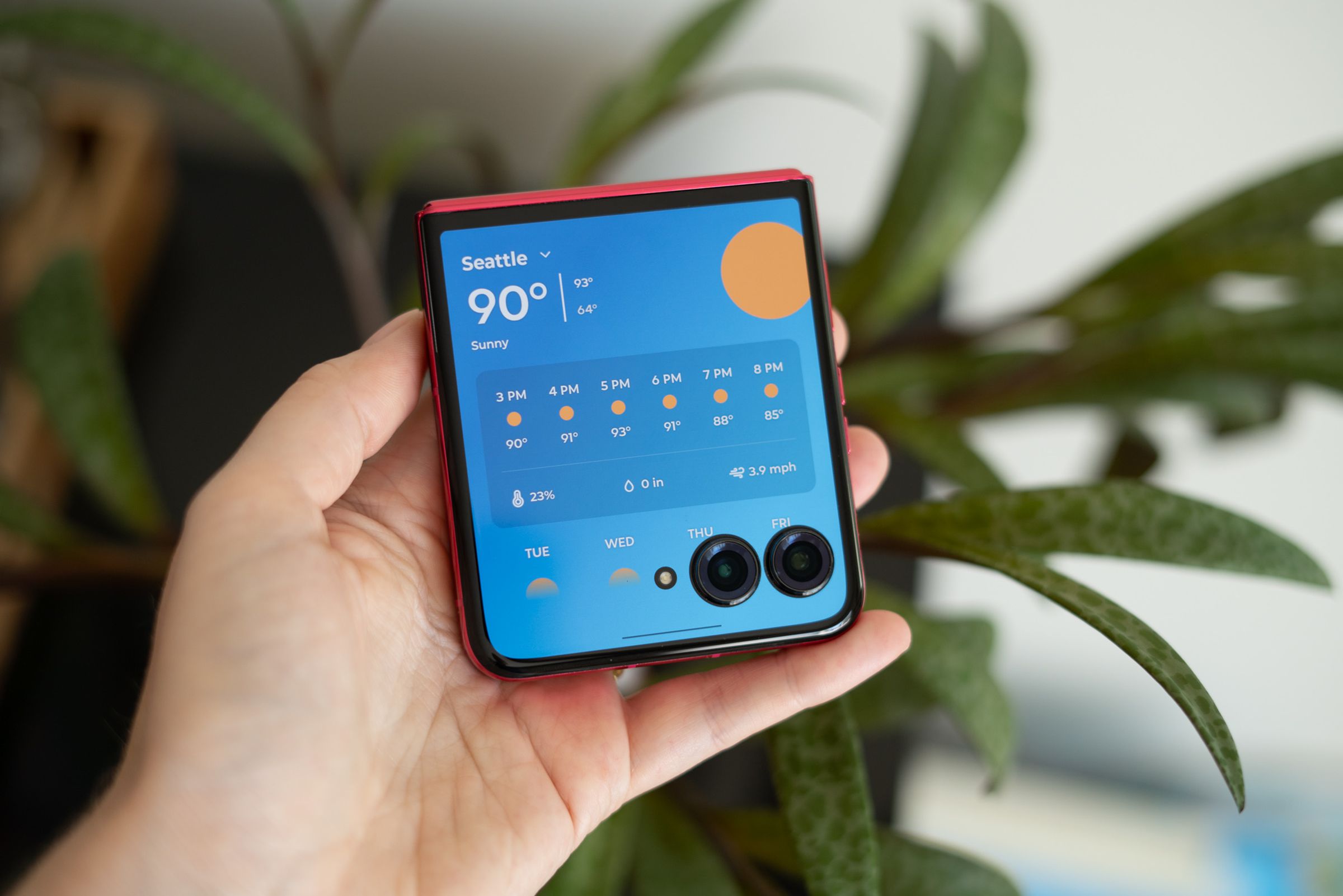

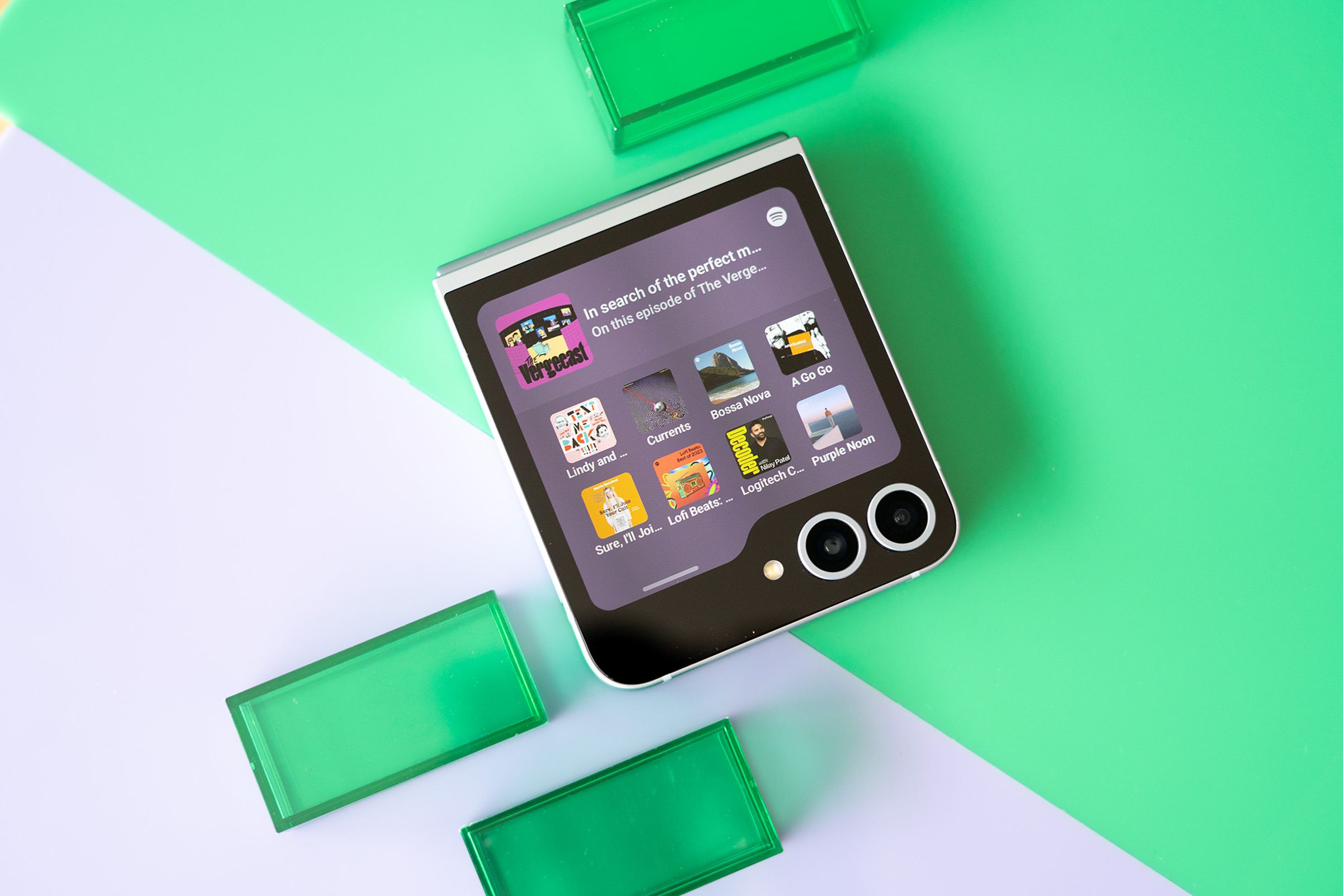
The Flip 6’s cover screen is a little more customizable than last year’s, which limited you to swiping through a bunch of full-screen widgets. Now, it’s more like a traditional home screen. You can still opt for a full-screen widget or add multiple smaller widgets to the same panel. The result feels much more streamlined; I don’t have to dedicate a whole panel to a timer; I can just add it as a smaller widget on a screen with weather info and my calendar.
And as much as I loved the playfulness of Motorola’s cover screen treatment, Samsung’s widgets are more reliable. Specifically, the Spotify panel on the Razr Plus cover screen often needs to refresh before it’ll actually work. The Spotify controls on the Z Flip 6 work flawlessly. Fun only goes so far.
Still, Motorola’s method for approving apps to run on the cover screen is much better than Samsung’s. Out of the box, Samsung will only allow you to run a handful of full apps on the small screen. To add any others, you need to go through a convoluted process: downloading Good Lock and another module from the Galaxy Store and then adding a launcher as a cover screen widget. Motorola doesn’t require any of that futzing about.
This is worth complaining about because I still think that being able to run a full app on the outer screen is one of the best things about a folding phone. Is it an ideal experience opening Strava on a tiny square? No! But I can tap, like, two things to start recording a bike ride without having to come face-to-face with everything else on my phone. It’s glorious.

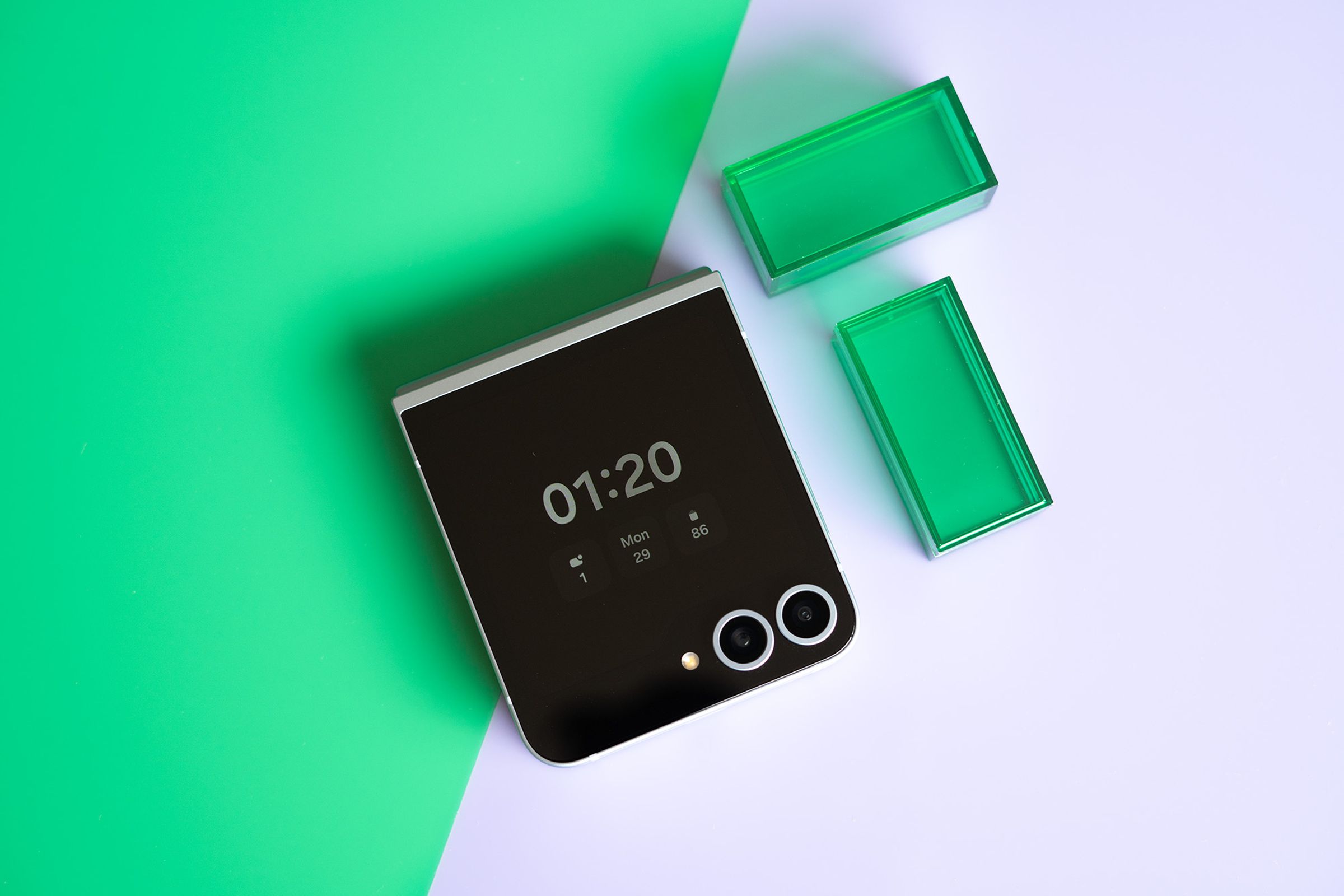
Typing out messages on the small screen’s keyboard is still a little ridiculous, but it’s another feature I appreciate about a flip phone even if it is an objectively worse user experience. It’s perfect for when I’m in the middle of something and want to send a short response to a text. As an alternative to tapping on those tiny keys, Samsung uses AI to suggest some responses based on previous messages in your thread. Like a lot of generative AI, the responses seem almost normal but are never quite right.
This is the part of the review where I’d normally tell you about a lot of other stuff, like performance and display quality, but you know what? It’s all fine. It’s 2024, and it’s hard to buy a bad phone at the flagship level. The inner screen? Fine. The crease is still there, but you don’t really see it when you’re looking at the phone straight-on, and it never bothered me much. Processing speed? Connectivity? Mouthfeel? Kidding about that last one. But they’re all fine.
Even battery life is fine, which is an achievement compared to the flip phones of just a few years ago. The Z Flip 6 will manage a full day of heavy use, but you’ll be cruising down to the single digits by bedtime. There are lots of other $1,000 phones with better battery life, starting with Samsung’s own Galaxy S24 Plus. If top-notch battery life is a priority, then a flip phone may not be for you.

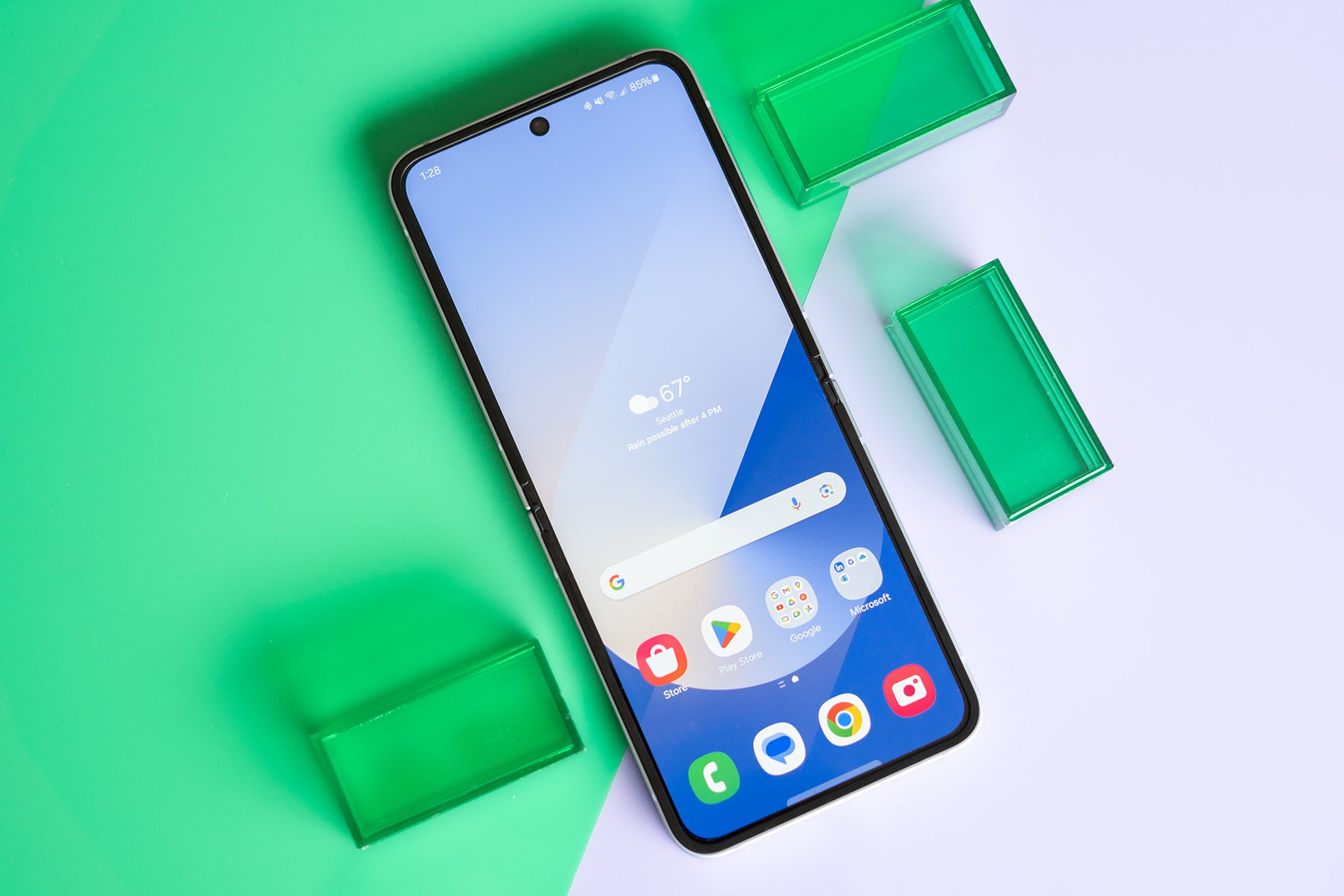
Getting sand in your crease will really ruin your day — and the same goes for a folding phone. The Flip 6 comes with an IP48 rating, meaning it’s fully water resistant but lord help you if that hinge sucks up a grain of sand. That “4” looks a lot better than the Razr Plus’ nonexistent dust rating, but it just means the phone is protected against foreign objects bigger than 1mm. That said, I’ve been pretty rough with my Z Flip 6 review unit over the past week. It’s survived being thrown into the bottom of some dusty bags, but I can’t say how well it would stand up to years of that kind of abuse.
Flip phone cameras are still catching up to slab phones, too. This year, Samsung has addressed that by upgrading the Z Flip 6 to a 50-megapixel main camera sensor. Image quality looks about as good as any flagship phone, though there’s no telephoto lens if you want to get closer to your subject — just digital zoom and a secondary ultrawide camera. Motorola went the opposite direction with the Razr Plus, trading its ultrawide for a 2x tele lens. That’s a nice move in theory if you like shooting portraits more than sweeping landscapes, but Motorola’s overall image processing isn’t as good as Samsung’s. Samsung phones really do take the best portrait photos, and the Z Flip 6 is no exception.
Samsung is working hard to sell the idea that flip phones work just as well as any other phone, and didn’t you see those Olympians taking pictures with one? Don’t you want that, too? But while there are things I love about the Z Flip 6, it’s still not a phone I would recommend to just anyone. Day-to-day durability is fine, but how it holds up against dust in the long run is still unclear. There’s a 12-month warranty on the Z Flip 6 when you buy it from Samsung in the US, but that doesn’t cover damage caused by dust exposure.
The Galaxy Z Flip 6 makes sense if you really want the benefits of the cover screen — less so if you just find the novelty appealing. You can easily find better battery life and cameras from a garden-variety slab phone. The Moto Razr Plus is more fun. But if you are sold on the idea of the flip phone, Samsung’s slow and steady approach is your best bet.
I find that outer screen incredibly useful, and while Samsung’s take on the UI lacks a little imagination, it works consistently, unlike Moto’s. Likewise, Samsung’s track record for software support is excellent: flagship phones get timely updates, and the Z Flip 6 will keep getting OS upgrades for seven years. Motorola makes a charming flip phone, but it comes with just four years of software support, and new OS updates can be slow to arrive.
Software updates, reliability, and camera processing: not the most fun stuff. But in this case, boring might just be better.
Photography by Allison Johnson / The Verge
To use the Samsung Galaxy Z Fold 6 or Flip 6, you must agree to:
- Samsung’s Terms and Conditions
- Samsung’s Privacy Policy
- Google’s Terms of Service (including Privacy Policy)
- Google Play’s Terms of Service
- Automatic installs (including from Google, Samsung, and your carrier)
There are many optional agreements. If you use a carrier-specific version, there will be more of them. Here are just a few:
- Sending diagnostic data to Samsung
- Samsung services, including customization for personalized ads, continuity service, nearby device scanning, and smart suggestions
- Google Drive backup, location services, Wi-Fi scanning, diagnostic data
- Bixby privacy policy (required to use Bixby), plus optional for Bixby options like personalized content, data access, and audio recording review
There may be more. For example, Samsung’s Weather app also has its own privacy policy that may include sharing information with Weather.com.
Final tally: there are five mandatory agreements and at least 10 optional ones.


